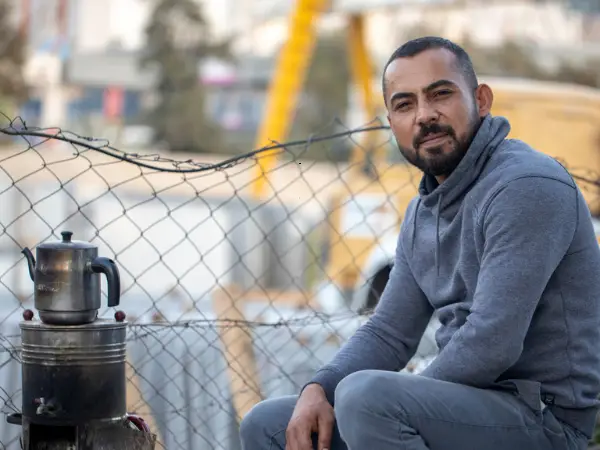This unique beverage traces its roots back centuries, connecting people through tradition and taste. The preparation process is an art form, with finely ground coffee and spices creating a distinctive flavor.
The Rich History Of Syrian Coffee
The rich history of Syrian coffee is a tale of tradition, culture, and flavor. It weaves through the ages, showcasing how this beloved beverage shaped social interactions and cultural practices.
Coffee’s Arrival In Syria: A Historical Perspective
Coffee made its entrance into Syria during the 15th century. It is said that coffee beans traveled from Ethiopia to the Arabian Peninsula. By the time it reached Syria, coffee quickly gained popularity. Here are some key points about its arrival:
- Coffee was first consumed in Yemen, then spread to Syria.
- It became a common drink in the Ottoman Empire.
- By the 16th century, coffee houses started to appear in Syrian cities.
These coffee houses, known as “qahveh khaneh,” were more than places to drink coffee. They became centers for socializing and discussion. People gathered to share news, play games, and enjoy music. The coffee culture grew rapidly. In fact, records show that by the 17th century, coffee was a vital part of daily life in Syria.
Here is a brief timeline of coffee’s journey:
| Year | Event |
|---|---|
| 15th Century | Coffee arrives in Syria from Yemen. |
| 16th Century | First coffee houses open in major cities. |
| 17th Century | Coffee becomes an essential part of Syrian culture. |
Damascus: A Key Hub In Coffee Trade And Culture
Damascus played a crucial role in the history of coffee. It became a central hub for coffee trade. The city’s location made it a perfect meeting point for merchants. They brought coffee from different regions, enhancing its popularity.
Key features of Damascus coffee culture include:
- Unique brewing methods that are still used today.
- A variety of coffee blends, often flavored with spices.
- Social rituals surrounding coffee drinking, such as serving guests.
The significance of coffee in Damascus extends beyond drinking. It symbolizes connection and community, deeply embedded in the city’s identity.

Evolution Of Brewing Techniques Over Centuries
The brewing techniques for Syrian coffee have evolved significantly. Early methods involved boiling coffee beans with water in a simple pot. Over time, these methods became more refined.
Today, the traditional way of making Syrian coffee is called “Turkish coffee.” Here are the main steps in the brewing process:
- Grind coffee beans to a fine powder.
- Mix water, coffee, and sugar in a small pot called a “cezve.”
- Heat the mixture slowly until it froths.
- Remove from heat before boiling over.
- Pour into small cups and enjoy.
This method highlights the rich flavors of coffee. The addition of spices like cardamom enhances the taste. Over the years, various regional variations have emerged, each with a unique twist.
Cultural Significance Of Syrian Coffee
The act of brewing and serving coffee reflects values like respect and generosity. This beverage has a long history, intertwining with daily life and special occasions.
Coffee And Hospitality In Syrian Traditions
In Syrian culture, coffee is a cornerstone of hospitality. Guests are treated with utmost respect, often served coffee as a welcoming gesture. This tradition highlights the importance of relationships in Syrian life. Offering coffee shows care and appreciation. It is more than a drink; it is a conversation starter.
Key points about coffee and hospitality:
- Serving coffee is a sign of respect.
- Guests receive the best coffee, often prepared with care.
- Coffee drinking is a communal activity.
Many homes have a special coffee pot called a briki. This pot is often made of brass or copper. It is used to brew the coffee with cardamom, giving it a unique flavor.
| Type of Coffee | Serving Style | Flavor Profile |
|---|---|---|
| Turkish Coffee | Served in small cups | Strong and rich |
| Arabic Coffee | Served with dates | Spicy and aromatic |
Gatherings often include coffee as a key element. Friends and family share stories over cups of coffee. This practice strengthens bonds and creates lasting memories.
Rituals And Customs Around Brewing And Serving
Brewing coffee in Syria is an art form. It involves careful preparation and specific rituals. The process begins with selecting high-quality coffee beans. These beans are often roasted and ground at home for freshness.
Common steps in the brewing ritual:
- Roasting the coffee beans until dark brown.
- Grinding the beans into a fine powder.
- Mixing the coffee with water and cardamom in the briki.
- Heating it slowly until it froths.
Serving coffee also involves customs. The host pours the coffee into small cups, filling them only halfway. This practice allows guests to enjoy multiple servings. The first cup is usually offered to the most honored guest.
Important customs include:
- Guests should not refuse coffee.
- It is polite to sip the coffee slowly.
- Returning the cup empty shows satisfaction.
These rituals enhance the experience of drinking coffee. They turn a simple act into a cherished tradition. Each cup shared is a step toward connection.

Flavor Profiles And Regional Variations
The flavor profiles of Syrian coffee vary greatly across regions. Each area adds its unique twist, influenced by local preferences and traditions.
The Distinct Taste Of Syrian Coffee
The taste of Syrian coffee is unlike any other. It is often brewed using finely ground Arabica beans. The process is slow, allowing the flavors to develop fully. The result is a rich and aromatic beverage. A few key elements define its distinct taste:
- Spices: Cardamom is the most common spice added. It gives the coffee a warm, aromatic flavor.
- Sweetness: Some prefer their coffee sweetened with sugar. Others enjoy it without any sugar.
- Saffron: In certain regions, saffron is added for a unique floral note.
Many people enjoy drinking coffee from small cups. This enhances the experience and encourages conversation. The serving style is just as important as the taste.
How Regional Preferences Shape The Brew
Regional variations in Syria lead to different coffee experiences. Each area has its own customs and preferences. This diversity is reflected in how coffee is prepared and served.
For example, in urban areas like Damascus, coffee is often prepared with a modern twist. People enjoy it strong with a hint of cardamom. In rural areas, traditional methods are common. Coffee is brewed over an open flame. This method adds a smoky flavor.
Here are some regional preferences:
- Damascus: Strong coffee with cardamom.
- Aleppo: Often includes saffron, giving a unique taste.
- Homs: Enjoys sweeter coffee, often served with pastries.
These preferences show how personal and cultural influences shape coffee enjoyment. It is not just a drink, but a reflection of identity and tradition.
The Art Of Syrian Coffee Preparation
The preparation of Syrian coffee is an art form. It involves selecting the right beans, understanding roasting techniques, and using proper brewing methods.
Selecting The Perfect Beans And Roast
Choosing the right coffee beans is crucial for making authentic Syrian coffee. The most popular beans used are Arabica and Robusta. Each type has unique characteristics that affect the taste.
- Arabica: Smooth flavor, less caffeine, preferred for its sweetness.
- Robusta: Stronger, more bitter flavor, higher caffeine content.
Roasting also plays a key role. Syrian coffee is usually roasted to a medium or dark level. This roasting process brings out rich flavors. Here are some important points to consider:
| Roast Level | Flavor Notes | Best Use |
|---|---|---|
| Medium | Balanced, fruity | Everyday coffee |
| Dark | Bold, smoky | Special occasions |
Freshness matters too. Always choose freshly roasted beans. Grind them just before brewing. This preserves flavor and aroma. Opt for a fine grind for the best results.
Brewing Techniques: Traditional Vs. Modern Methods
Brewing methods greatly influence the taste of Syrian coffee. Traditional methods involve using a special pot called a cezve. This pot is essential for making authentic coffee.
Here are steps for traditional brewing:
- Measure water and coffee. Use about 1 tablespoon of coffee per cup.
- Add sugar if desired. Stir to combine.
- Heat the cezve on low heat. Do not boil.
- Watch for foam. Remove before it overflows.
- Pour into small cups. Enjoy slowly.
Modern brewing methods are also popular. Some people use espresso machines or French presses. These methods are quicker and easier but may change the flavor. Here’s a quick comparison:
| Method | Time | Flavor |
|---|---|---|
| Traditional (Cezve) | 5-10 minutes | Rich, authentic |
| Espresso Machine | 2-3 minutes | Strong, concentrated |
| French Press | 4 minutes | Smooth, full-bodied |
Each method has its charm. Experimenting can lead to discovering your perfect cup of Syrian coffee.

